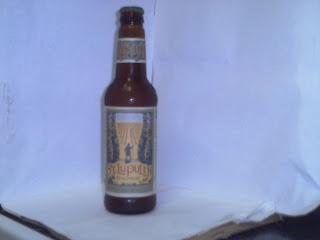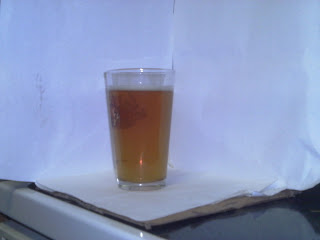Last year, Lagunitas Brewing gave up its right to use the
number “420” on its beer labels. The brewery decided to drop the number after
receiving a complaint from Sweetwater Brewing Company in Atlanta, which markets
a “420 Pale Ale.” This was one of the more publicized disputes in craft brewing, but it is far from the only one.
I Thought It Was Supposed to Make You Guys Nonviolent
420 is a loosely-veiled slang for marijuana smoking,
something that is closely associated with microbrewing. Many microbreweries
offer a hemp ale of one kind or another, and the two brewers in question here
are particularly involved in the marijuana subculture. Sweetwater Brewing
Company also offers a “Danktoberfest” beer, the latest in its “Dank Tank”
series. Dank is another term associated with the marijuana culture, although
its meaning is becoming more general.
For its part, Lagunitas’ brand also stands on its
pot-smoking credentials, which it waves as part of its generally defiant stance
against authority. It attempted to market a beer named “Kronick,” another
marijuana slang. When authorities refused to approve the name, the beer became
“Censored.” Lagunitas also markets its “Undercover Investigation Shut-Down
Ale,” which commemorates the temporary shut-down of the brewer in 2006 after agents
witnessed people smoking marijuana in the company’s biergarten. The beer that
got it in trouble in this particular trademark dispute was its “The Waldos'
Special Ale,” which refers to a smoking club that, in one popular etymology,
originated the mysterious association of 420 with pot smoking.
In the current case, the owner of Lagunitas decided to drop
the phrase from its packaging rather than dispute the trademark.
A Fermenting Problem
Don’t think that this type of trademark dispute is down to
forgetful potheads who don’t know better than to use someone else’s trademark:
it’s becoming an almost daily phenomenon in microbrewing. There are now more
than 3000 breweries in the US. That's less than the early 1870s when recordkeeping began, but a dramatic upsurge from the less than 90 at the industry's nadir in 1979. About 98% of breweries
are small craft breweries, and they combine to offer more than 10,000
individual beers. Although they are all angling for unique names that will make
their brand stand apart, they don’t always succeed.
Lagunitas has been on both sides of (non-marijuana-related)
trademark disputes before. Fellow California brewer Bear Republic Brewing
Company has aggressively defended its “Racer 5,” which has been listed as the
best IPA in the US, against brewers putting similar-sounding beers on the
market. Sixpoint Brewing in Brooklyn recently brought a lawsuit against
Renegade Brewing in Denver, Colorado. Sixpoint alleged that Renegade’s
newly-marketed “Ryeteous Ale” was too similar to its own “Righteous Ale.” In
response to the lawsuit and in Lagunitas-like style, Renegade changed the name
of its rye IPA to Redacted, otherwise maintaining the style of the can.
To be fair, though, this type of wrangling over names is not
new. In 1907, Anheuser-Busch became embroiled in a fight over the right to
market beer under the name “Budweiser,” against two companies that were
actually brewing beer in Budweis, Germany. The US company conceded the right to
market “Budweiser” in most of Europe, where it is sold as “Bud” or
“Anheuser-Busch B.”
Beer Is Made of Water, Barley, Yeast, Hops, and Brand
These days, beverage attorneys advise brewers that branding
is “the most important first legal step” in starting a brewery. Beer branding these
days is a matter of life and death for a brewer, as the Strange Brewing Company
in Colorado figured out last year. The company received a cease-and-desist
letter from Strange Brew Beer and Wine Making Supplies in Marlboro,
Massachusetts. In 1997, the Massachusetts company trademarked the name Strange
Brew in connection with “beer” and "retail store services featuring beer
and wine making supplies."
Although the Colorado company attempted to resolve the
dispute by suggesting cooperative alternatives, this was deemed “offensive,”
and the suit remains unresolved, with both companies' Facebook pages taken down
as part of the dispute.
Microbrewers, it seems, have to be more protective of their
brand than anything, even their brewing recipes, which they often share freely
with each other and homebrewers.
A Changed Industry
Everyone involved in these disputes comments on how much the
industry has changed since a high-profile case of trademark infringement seemed
to set a precedent for the industry in 2006. In that year, Russian River
Brewing Company in California and Avery Brewing Company in Colorado discovered
that they were both making a beer called “Salvation.” Rather than fight for the
right to use the name, the brewers got together to make a joint brew called
“Collaboration not Litigation.”
Over the years, there have been a few similar cases of
cooperation, but it seems the trend in the industry these days is litigation,
litigation, litigation.
A couple of our hometown brewers in Denver have been at the receiving end of this unfortunate change. Strange Brewing, a feisty little brewery in an unprepossessing little industrial park, was sued by a brew shop in Massachusetts. They're not even a brewery, but they claimed the name, and the PTO lumps them all in the same category. After a year-and-a-half-long battle that involved taking down each other's Facebook pages (Strange became "That Brewery on Zuni"), lots of legal maneuvering, and name-calling, the two parties decided to settle out of court. Strange Brewing became Strange Craft Beers.
Just a mile and a half or so away, Renegade Brewing got sued for its Ryeteous Rye IPA by Sixpoint Brewing in Brooklyn, which made a Righteous Ale. Although Renegade didn't have a good legal case, they responded with appropriate spirit, renaming their beer "Redacted," which is a pretty good replacement.
A couple of our hometown brewers in Denver have been at the receiving end of this unfortunate change. Strange Brewing, a feisty little brewery in an unprepossessing little industrial park, was sued by a brew shop in Massachusetts. They're not even a brewery, but they claimed the name, and the PTO lumps them all in the same category. After a year-and-a-half-long battle that involved taking down each other's Facebook pages (Strange became "That Brewery on Zuni"), lots of legal maneuvering, and name-calling, the two parties decided to settle out of court. Strange Brewing became Strange Craft Beers.
Just a mile and a half or so away, Renegade Brewing got sued for its Ryeteous Rye IPA by Sixpoint Brewing in Brooklyn, which made a Righteous Ale. Although Renegade didn't have a good legal case, they responded with appropriate spirit, renaming their beer "Redacted," which is a pretty good replacement.
My Solution
Ideally, every dispute like this should be resolved amicably without the need for anyone to tear down their fellow beercrafters. But if they can't share a name, they should fight for it. Brewers should agree to a taste test in a neutral market, where neither of them has a presence. The winner of the taste test gets to use the name, and gets the rights to that market, which will be primed with the publicity from the taste-test showdown.
It's a solution that can preserve the amicable spirit of competition that has helped foster the craft beer resolution. I think it's a win for everyone, except maybe the lawyers.






